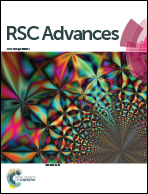Synthesis and enhanced mechanical properties of MgO substituted hydroxyapatite: a bone substitute material
Abstract
Hydroxyapatite (HAp) nano-ceramic powder was synthesized successfully via microwave irradiation technique. To study the effect of MgO inclusion on the mechanical properties of pure HAp, its composites with different (0.1, 0.2, 0.3 and 0.5) wt% of MgO were prepared. The influence of sintering temperature on the mechanical properties of pure HAp and its composites with MgO was also observed at 1000, 1100, 1200 and 1300 °C respectively. Samples were characterized by using X-ray diffraction (XRD) to determine the phase stability. The mechanical properties of pure HAp and its composites with MgO were measured using several parameters such as density, Young's modulus, fracture toughness, load bearing capability and porosity. It was revealed that MgO addition significantly enhanced the grain growth as well as the mechanical properties of HAp. The HAp composite modified with 0.5 wt% of MgO sintered at 1200 °C exhibited the best mechanical characteristics. This composite exhibits density of 3.04 g cm−3, Young's modulus of 126.31 GPa, fracture toughness of 178.58 MJ cm−3 and a maximum load bearing capability of 11.61 kN. To authenticate the biocompatibility of prepared biomaterials, the cell viability (MTT assay) was carried out and the mechanically best composite was found to be compatible for biomedical applications.


 Please wait while we load your content...
Please wait while we load your content...